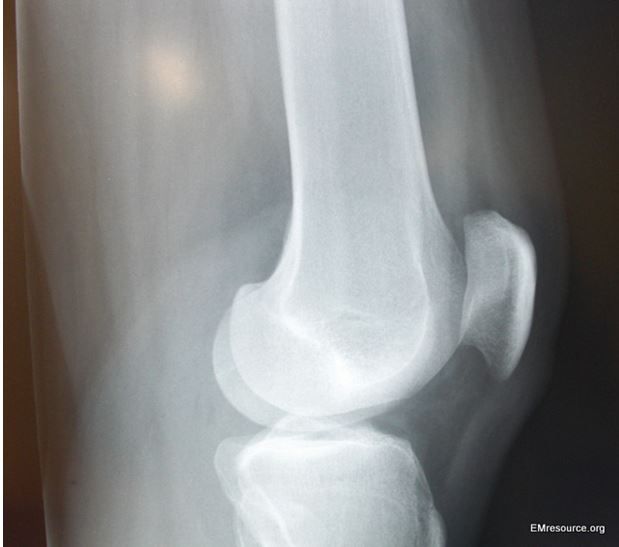Lower Leg Injury With a Twist
While demonstrating his retro dance moves, a 31-year-old injures his knee doing “the Twist.” Now he can barely walk. Would you order an x-ray?
Figure 1. (Click on images to enlarge)

A 31-year-old man presents to the emergency department with diffuse knee pain after a low-energy injury. He said it “gave out” while he was dancing, doing “the Twist.” He denies any other injury or pain or any prior orthopedic problems. He felt fine just before the injury but now states he can barely walk. He is otherwise healthy with no medical problems and takes no medication. Just to be sure you eliminate identifiable risk factors for early osteoporosis, such as steroid or immunosuppressant use, seizure medications, reflex sympathetic dystrophy, or an eating disorder. He denies all.
On examination, he is afebrile with otherwise normal vital signs. He is guarding his injured knee but has symmetric pulses in his feet. His knee flexion is mildly limited, but extension is full. With his knee as flexed as is tolerable, you palpate just lateral to the patellar tendon and note the bulge of a small effusion. You compare it with the other knee and note that there is definitely a difference. There is no joint line tenderness and the ligaments are all fortunately stable. Otherwise, the rest of his physical examination is normal. You ask him to walk, which he can do, but with fairly significant discomfort.
Based on criteria from the Ottawa Knee Rule, the patient doesn’t need x-ray films, but you feel something is wrong here, especially with the acute effusion.
You let your judgment trump the imaging criteria and order a knee x-ray film; results are shown at right in Figure 1.
Were you correct?
If so, what finding(s) is/are demonstrated?
Please leave your comments below; click here for answer and discussion.